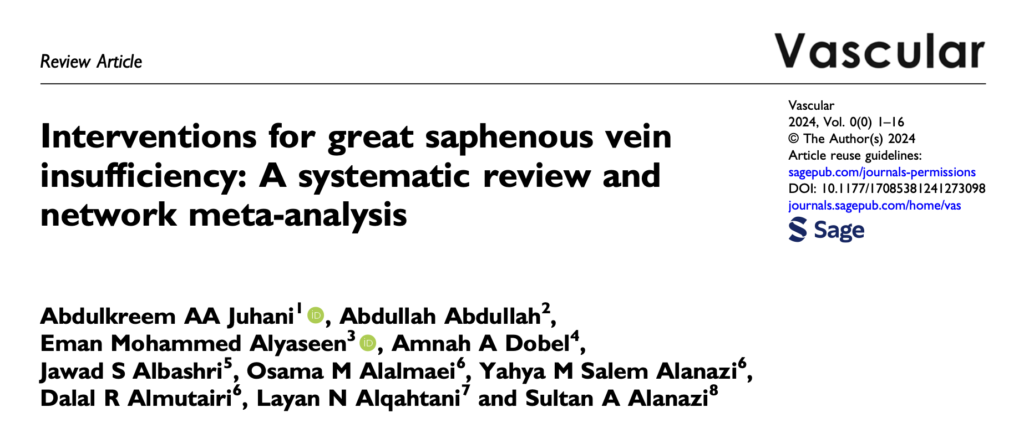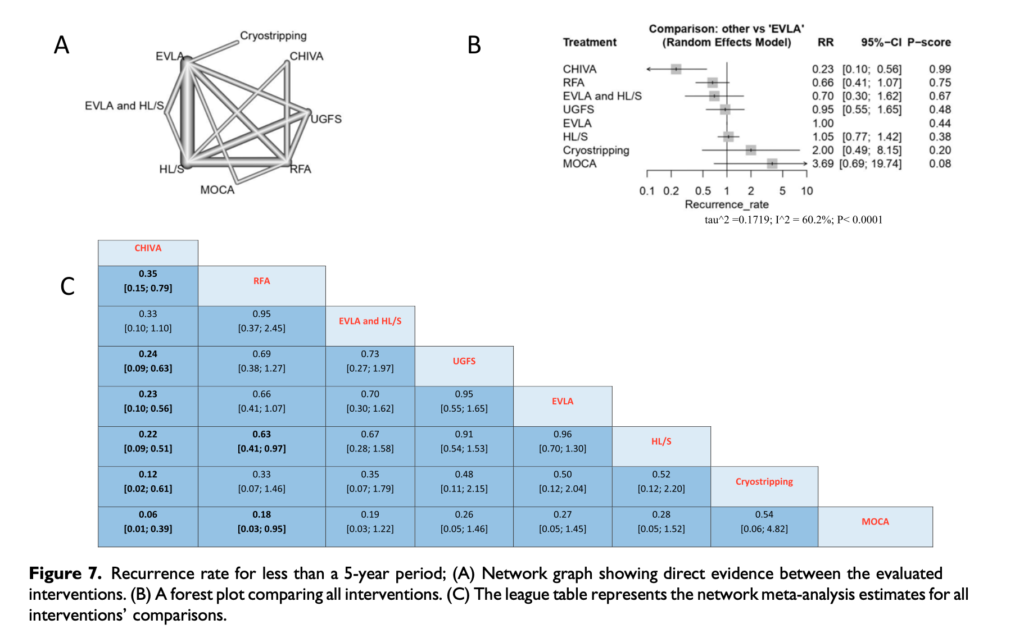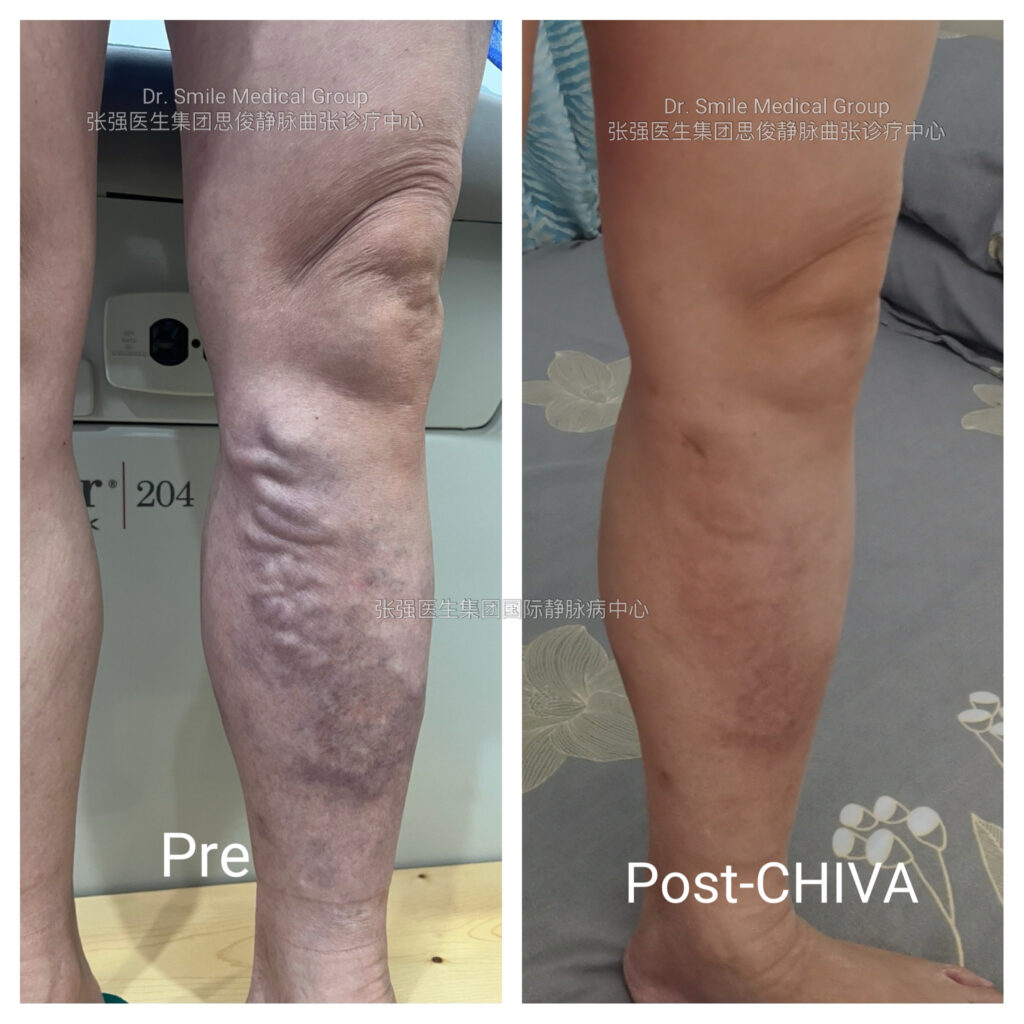Originally contributed by Dr. Qiang Zhang on the Veinsights . Original Link: https://veinsights.blogspot.com/2024/10/httpswww.drsmilehealth.com.html

As a vascular surgeon, I’m always on the lookout for the latest developments in treating great saphenous vein insufficiency (GSVI). Recently, I came across a comprehensive review.

This paper offers a thorough comparison of various treatment methods, shedding light on the effectiveness of different options. Here are some insights and reflections based on the findings that may help guide treatment choices.
A Comprehensive Study with Broad Scope
This systematic review included 75 studies, covering a total of 12,196 patients, and compared about 20 different treatment methods, ranging from minimally invasive procedures to conventional surgeries. The large-scale network meta-analysis provides a comprehensive look at the success rates, recurrence rates, pain management, quality of life improvements, and safety across various approaches.
Technical Success: The Superiority of Endovenous Ablation
In terms of technical success, endovenous laser ablation (EVLA), high ligation and stripping (HL/S), and cyanoacrylate adhesive injection (CAE) demonstrated higher rates of success compared to less effective techniques like ultrasound-guided foam sclerotherapy. This reinforces the shift toward endovenous ablation methods over the past few years, as they offer better outcomes with shorter recovery times.
Recurrence Rates: CHIVA Stands Out
CHIVA (Conservative Hemodynamic Cure for Venous Insufficiency) showed a significantly lower recurrence rate compared to treatments like radiofrequency ablation (RFA) and others. For patients seeking long-term solutions, CHIVA is certainly a worthwhile consideration. Although traditional methods like HL/S also showed some promise in preventing recurrence, they still lag behind CHIVA’s effectiveness.

Pain Management: The Benefits of Steam Ablation
The review highlighted that endovenous steam ablation (EVSA) was the most effective in reducing post-procedure pain. This is an important finding for pain-sensitive patients, as EVSA not only addresses vein insufficiency effectively but also minimizes post-treatment discomfort.
Quality of Life Improvements: MOCA’s Advantages
Mechanochemical ablation (MOCA) was particularly effective in enhancing quality of life and speeding up recovery. For patients who aim for a quick return to daily activities, MOCA offers not only good treatment results but also a shorter downtime, making it a preferable choice.
Safety Considerations: Comparable Across Methods
The review found no significant differences in safety among the various interventions, indicating that most options are relatively safe. This provides flexibility for both surgeons and patients in choosing the treatment that best fits individual preferences and clinical needs.
Recommendations for Future Research
While this network meta-analysis provides valuable insights, it also has limitations. Some studies had a high risk of bias, and there was a lack of data stratification based on the severity of the condition. Additionally, variability in surgical expertise could have influenced outcomes. Future studies should focus on patient stratification and standardizing surgical techniques to improve the reliability and applicability of the findings.
Conclusion and Outlook
Overall, this review offers important insights into GSVI treatment options. CHIVA demonstrated superior performance in reducing recurrence rates, while EVSA was particularly effective for pain management. MOCA, as a newer endovenous approach, showed significant potential in enhancing quality of life and expediting recovery. As a vascular surgeon, I believe that incorporating patient-specific factors and leveraging the strengths of different methods will be crucial in tailoring the most suitable treatment plans.
I hope these reflections help shed light on the evolving landscape of GSVI treatment. Going forward, I will continue to stay abreast of new techniques and incorporate them into clinical practice, aiming to deliver the best possible outcomes for patients.
